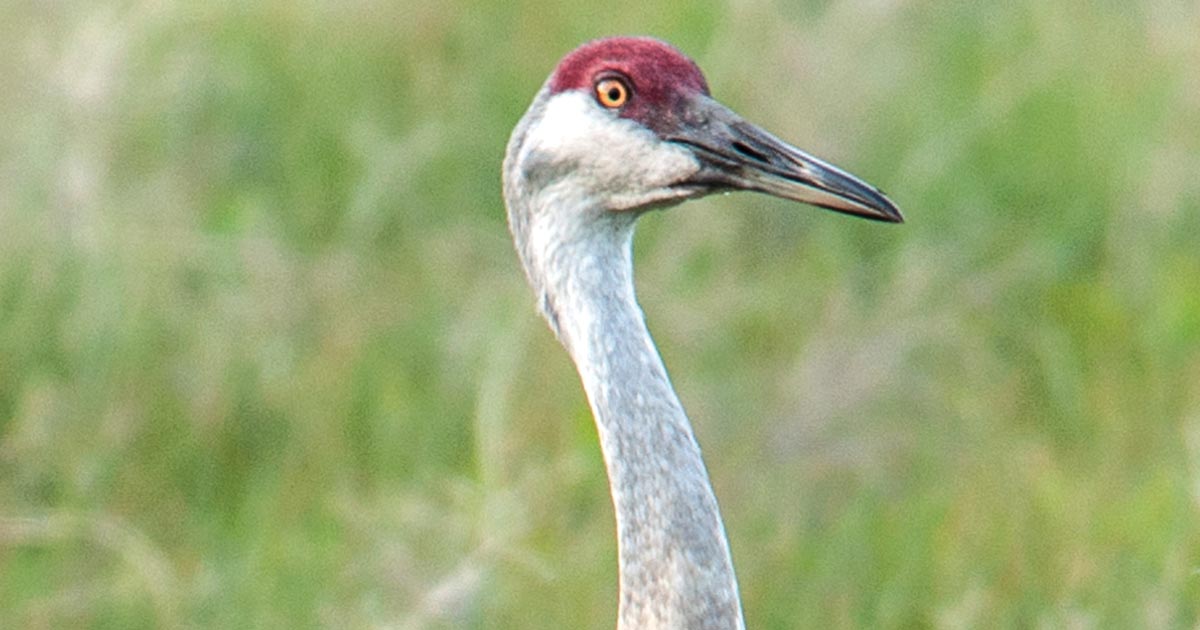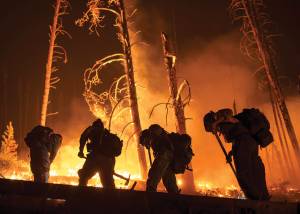By KEN LEVY
Rapid declines in bird populations in the United States and Canada raise the alarm for doing everything possible to protect migrating species.
World Migratory Bird Day, celebrated on the second Saturday in May and also observed October 8 this year, is an annual global campaign highlighting the need for the conservation of migratory birds and their habitats.
Bird festivals, education programs, exhibitions, and bird-watching excursions celebrate WMBD in many locations around the world. The differing dates roughly correspond with peak migration periods in different locations. The United States and Canada celebrated in May, but the need to preserve bird habitats and deal with climate issues affecting their populations is ongoing.
Artificial Lighting
According to the Smithsonian Migratory Bird Center, which created the program with Environment for the Americas, bird populations in the United States and Canada have declined by 29 percent, or almost three billion birds, since 1970. Light pollution is to blame for huge losses of nocturnally migrating birds, hence this year’s theme is “Dim the Lights for Birds at Night.”
The WMBD website states at least 100 million birds die each year in the United States from colliding with buildings. Artificial light also impacts bird breeding, feeding, and other vital behaviors.
“The biggest single thing seems to be lights in tall buildings. The birds migrating at night get disoriented and fly into the windows, and they’re killed,” said Ken Miracle, longtime birder and consummate bird photographer from Boise, Idaho. His first experience with this was when he and others conducting bird-strike surveys discovered that large quantities of western tanagers littered the ground near a tall building in downtown Boise.
“They were migrating and slammed into a building,” he said. “They think it’s a place they can fly through.”
Miracle advised turning off the lights in high-rise buildings at night, to help prevent the problem. Glass products for windows, which appear to show solid objects too small for the birds to pass between, can also help. Gaps should only be 2- to 4-inches apart, according to the National Audubon Society.
Changing Migration Patterns
Not all birds migrate at night. According to the Montana Science Partnership (MSP) website, many birds use a sun compass for direction, while others navigate based on a combination of other abilities, including detecting magnetic fields, using visual landmarks, and olfactory cues.
Either way, Miracle said, migration patterns are changing dramatically.
The dark-eyed junco, once relatively plentiful in Idaho, migrates by elevation. Miracle said they go uphill and can be found in Boise foothills in the pines in summer, then they come down lower in winter. It’s not clear what’s affecting their populations in Idaho.
On the flip side, the beautiful lazuli bunting, a vivid blue and cinnamon migrating songbird that loves Idaho’s shrubs, is showing up more often. Miracle said seeing one used to be a rare occurrence.
“They’ve always been around here, but they’re migrating later, staying longer, and their numbers have exponentially increased in southern Idaho,” he said.
Best Migratory Birdwatching in Montana
Miracle’s work with birds includes helping keep statistics and images current at eBird.org, an online database of bird sightings and information, developed by the Cornell Lab of Ornithology.
In Montana, Bowdoin National Wildlife Refuge tops the list for hot spots to view birds both permanent and migratory. Freezeout Lake Wildlife Management Area and Lee Metcalf National Wildlife Reserve tie for second as best places to see birds on the wing, according to eBird.
Summer residents are migratory birds who arrive in the spring, nest in summer, and return to winter grounds in fall. Winter residents come down from Canada, while transient species nest farther north and winter farther south, according to the MSP website.
Best Migratory Birdwatching in Idaho
In Idaho, eBird.org lists the Camas National Wildlife Refuge as the number-one site for catching glimpses of birds, followed by Market Lake Wildlife Management Area and Black’s Creek Bird Reserve.
Among other birds, Swainson’s hawk is sometimes seen at Camas. Miracle said Swainson’s breed in this region then migrate to Argentina. He said the Boise River Greenbelt is an outstanding location for waterfowl and other species.
“We have a lot of migratory birds that come and go into Idaho,” he said. “Some birds just migrate up and down in elevation, others go north and south, and some are just passing through. Most people don’t realize the sheer variety that comes through, some of which winter here, some that pass through, and some that migrate here for breeding.”
Some birds, like the Anna’s hummingbird, which never used to overwinter in Idaho, have started to overwinter and breed here.
Greater sage grouse migrate within Idaho, but their migration patterns are now changing due to climate change, according to Miracle.
Boise State University’s Intermountain Bird Observatory (IBO) recently concluded its HawkWatch and raptor banding program. Its fall raptor migration research at its Lucky Peak station runs through October 30 and is open to visitors daily. Details available at boisestate.edu/ibo/science/lucky.
Miracle said the IBO offers opportunities to educate kids and help bring up the next generation of birders and conservationists, “so people realize we’ve got to take care of the habitat the birds live in.” ISI










